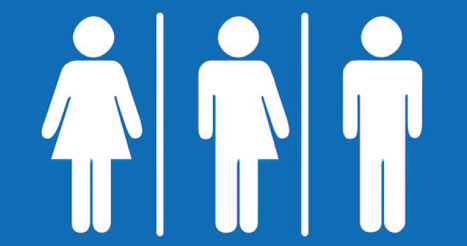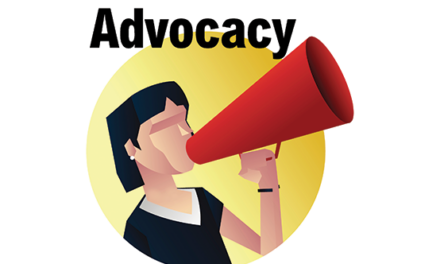As the debate goes on, schools must protect students and comply with the law.
Over the past six months, considerable media and legal attention have been focused on the rights of transgender students in public schools. Last month, a Kappan article, “Seven reasons for accommodating transgender students at school,” tackled the arguments against providing transgender students access to restroom facilities based on their gender identity.
I want to step back and look at the legal question — Are transgender students protected from discrimination in schools? — as well as the practical issue — What should educators and school districts do to protect students and comply with the law?
What Title IX requires
On May 13, 2016, the U.S. Department of Education Office for Civil Rights and the Department of Justice jointly released guidelines on school district responsibilities for transgender students (see www2.ed.gov/about/offices/list/ocr/letters/colleague-201605-title-ix-transgender.pdf.) The underlying legal authority used was the antidiscrimination statute, Title IX of the Education Amendments (20 U.S.C. 1681): (a) prohibiting discrimination on the basis of sex. The departments said that discrimination on the basis of gender identity is sex discrimination:
The Departments treat a student’s gender identity as the student’s sex for purposes of Title IX and its implementing regulations. This means that a school must not treat a transgender student differently from the way it treats other students of the same gender identity.
The guidance document advises that Title IX requires all students (including transgender students) be treated consistent with their professed gender identity. Title IX protection is not conditioned on the beliefs of other students or the community. In addition, requiring students to supply evidence or documentation of their gender identity is prohibited.
The guidance document also states that Title IX requires districts to provide an education environment for students that is free from gender discrimination. The broad definition requires schools to:
- Permit students to use single-sex restrooms and locker rooms as well as overnight accommodations on field trips, consistent with students’ gender identity.
- Ensure employees use pronouns and names consistent with students’ gender identity.
- Permit transgender students to participate in single-sex classes and extracurricular activities consistent with their gender identity. (The exception here is for competitive sports teams, where participation may be limited based on “sound, current, and research-based medical knowledge about the impact of the student’s participation on the competitive fairness or physical safety of the sport.”)
The determination that Title IX protects students from discrimination on the basis of gender identity is not new. The Department of Education provided this interpretation of Title IX in 2014 in its guidance document:
Title IX’s sex discrimination prohibition extends to claims of discrimination based on gender identity or failure to conform to stereotypical notions of masculinity or femininity…. Similarly, the actual or perceived sexual orientation or gender identity of the parties does not change a school’s obligations.
This was not the first time a legal authority had held that antidiscrimination laws protect against gender identity discrimination and require access to facilities and programs. Several Circuit Courts of Appeals (First, Sixth, and Eleventh) have determined that Title VII protects people from sex discrimination on the basis of gender identity in employment situations. The Equal Employment Opportunity Commission (EEOC) has issued fact sheets and guidance documents setting forth protections for transgendered individuals, including use of restrooms, consistent with the individual’s gender identity. In Macy v. Dep’t. of Justice (April 12, 2012), the EEOC held that:
- Denying an employee equal access to a common restroom corresponding to the employee’s gender identity is sex discrimination.
- An employer cannot condition this right on the employee undergoing or providing proof of surgery or any other medical procedure.
- An employer cannot restrict a transgender employee to a single-user restroom.
Challenges to the guidance document
In G.G. v. Gloucester County School Board (April 19, 2016), the Fourth Circuit Court of Appeals held that Title IX protected against gender identity discrimination and required the school district to provide access to facilities that correspond to the student’s gender identity. However, acting on a 5-3 vote in early August this year, the U.S. Supreme Court put a hold on the implementation of this ruling pending possible review by the court.
The authority of the Department of Education and the Department of Justice has also been questioned in two cases filed by large state coalitions. The first, State of Texas v. U.S. (May 25, 2016), was filed in a federal district court in Texas and includes Texas, Alabama, Arizona, Georgia, Louisiana, Maine, Oklahoma, Tennessee, Utah, West Virginia, and Wisconsin. The second, State of Nebraska v. U.S. (July 8, 2016), was filed in a federal district court in Nebraska and includes Nebraska, Arkansas, Kansas, Michigan, Montana, North Dakota, Ohio, South Carolina, South Dakota, and Wyoming. The cases challenge the departments’ authority because of procedural violations of federal rulemaking and a constitutional claim that the departments overstepped their authority. The suits also allege that the guidance has no basis in law and would cause “drastic” changes in public schools across the United States.
On Aug. 21, the Texas district court made a preliminary ruling that the departments could not hold states and districts accountable for implementing the guidance document until the completion of the litigation. Further, the court said this was true across the entire United States, except in those states which have specific contrary statutes, not just within the court’s own geographic jurisdiction.
What schools should do
In the midst of this legal swirl, we need to remember that the issue arises from a question of discrimination — specifically, sex discrimination. Protection from discrimination has been the subject of many years of federal legislation. When the states and federal government disagree on issues, state law generally has to yield to federal policy. Until a controlling court or the U.S. Supreme Court specifically says otherwise, the federal rules have precedent.
On specific issues schools should consult with their own school attorneys. Generally, schools and educators in states that prohibit gender identity discrimination should follow state laws and policies. Those in the states involved in the Texas litigation will not be held compelled to change their practices until that litigation is resolved. This is also true for schools in the Fourth Circuit Court of Appeals (Maryland, North Carolina, South Carolina, Virginia, and West Virginia). In the remainder of the states, following the federal guidance may be the best way to proceed. Because the departments’ guidance is prevailing federal law, educators and districts should work toward adopting policies and practices that are consistent with the guidance. This would include:
- Adapting policies to ensure that students are not denied access to facilities and programs based on their gender identity;
- Making people aware of students’ rights and needed accommodations;
- Developing plans for dealing with student transitions;
- Developing policies for adapting student records; and
- Working with the school community to help people understand the issues and their responsibilities through training programs on gender identity.
The U.S. Supreme Court’s hold on the implementation of the ruling for a transgender student may signal that they would accept the case for review this term. Stay tuned.
Citation: Underwood, J. (2016). The transgender question: What are schools to do? Phi Delta Kappan, 98 (2), 76-77.
ABOUT THE AUTHOR

Julie Underwood
Julie Underwood is the Susan Engeleiter Professor of Education Law, Policy, and Practice at the University of Wisconsin-Madison.










